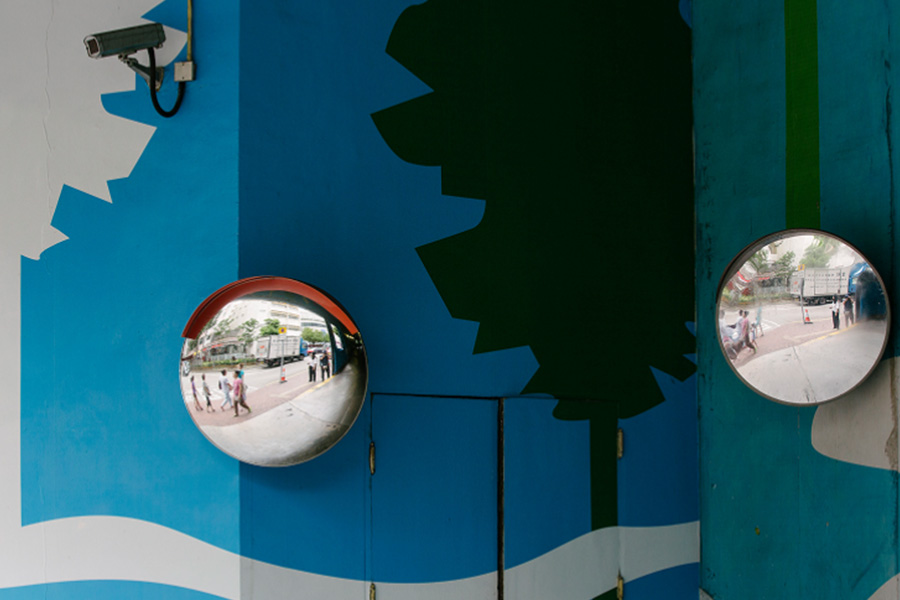In a world where mobility is second nature, the tools that quietly ensure our safety often go unnoticed until they fail to do so. Convex mirrors and blindspot mirrors may seem unremarkable. They play a critical role in traffic management, driver safety, and retail surveillance. Yet, many users remain unaware of how to choose them wisely or the risks of ignoring their function. Let’s uncover what you’re missing.
Are Convex Mirrors Worth It?
At a glance, the price tag on a convex mirror may seem modest, yet its value stretches far beyond its physical form. Installed strategically, convex mirrors offer a wide-angle field of view that helps detect approaching vehicles, pedestrians, or hazards well before they’re visible through standard flat mirrors.
From a financial standpoint, investing in quality mirrors reduces liability risks, minimizes accident-related costs, and increases workplace safety compliance. The same holds for blindspot mirrors. Those compact additions to vehicle side mirrors eliminate areas even the most expensive cars fail to cover.
Skimping on mirror quality might save a few pounds today, but the long-term repercussions can cost exponentially more.
How to Choose the Right Mirror
It’s easy to assume that all convex and blindspot mirrors are created equal, but the details matter. When selecting a convex mirror, the size should correspond to the viewing distance.
Larger mirrors for longer corridors or wider spaces, and smaller ones for tight corners or compact indoor settings. If you’re purchasing for outdoor use, always opt for weather-resistant models with UV protection to prevent warping and fading.
Blindspot mirrors, on the other hand, should offer a balance between visibility and intrusion. Overly large blindspot mirrors can distort the main side view. Those that are too small might not eliminate the blind zone effectively. Choose models with adjustable angles for flexibility and avoid adhesive types that lose grip in extreme temperatures unless specifically rated for outdoor durability.
What Most People Overlook
Most people install these mirrors reactively—after a minor collision, a warehouse mishap, or a near-miss on a driveway. But they work best when installed before something goes wrong.
One often missed benefit of convex mirrors is their utility in surveillance. Retailers use them to monitor aisles or prevent theft in areas with limited visibility. For drivers, blindspot mirrors can be life-saving tools, especially for motorcyclists, delivery drivers, or anyone operating in high-traffic zones.
Moreover, it’s worth noting that not all installations are legally compliant. In certain commercial or public settings, mirrors must meet specific safety standards. Checking for certifications or material ratings ensures you’re getting a mirror designed to handle the intended pressure, be it wind, heat, or repeated impact.
Simple Adjustments That Change Everything
Sometimes the issue isn’t the absence of a mirror, but poor placement. A convex mirror angled too high or too low can completely miss the target area, making it virtually useless. Ensure it’s installed at eye level or the typical sightline of the average user. In workplaces like factories or garages, mirrors should face oncoming pathways, not the side walls.
For blindspot mirrors, the fix is often as simple as repositioning. A common mistake is placing them on the inner edge of the side mirror, when in fact, the outermost corner offers better peripheral coverage. And remember, a clean mirror is a functional mirror. Dust, frost, or water spots can distort visibility. A quick wipe every few days makes all the difference, especially during rainy seasons or dusty summers.
The Price of Overconfidence
Ironically, one of the biggest dangers of convex and blindspot mirrors is overconfidence. These mirrors enhance visibility but don’t eliminate danger. Overreliance can lead to complacency. It’s essential to pair their use with traditional checks like turning your head before changing lanes or using reversing alarms when backing into tight areas.
Then there’s the matter of poor-quality materials. Low-grade plastic can blur over time, and untreated surfaces may crack under UV exposure or extreme cold. A distorted mirror gives a false sense of clarity, which might be more dangerous than having none at all.
Always check for material details. Acrylic is shatter-resistant and often preferred for indoor use, while polycarbonate is stronger for outdoor settings.
Clarity Isn’t Just Optical, It’s Practical
Convex and blindspot mirrors are humble heroes of safety and spatial awareness. They don’t beep, flash, or announce themselves with alerts. Their contribution to safer navigation, better surveillance, and efficient logistics is unmatched. With the right approach, knowing what to buy, how to install, and how to maintain, you’re investing in a layer of awareness that technology alone can’t replace. If you’re serious about staying ahead of the blindspots, perhaps it’s time to give these quiet sentinels the attention they deserve.
Still, squinting into guesswork? See what you’ve been missing. Explore Astrol Security Engineering today.



